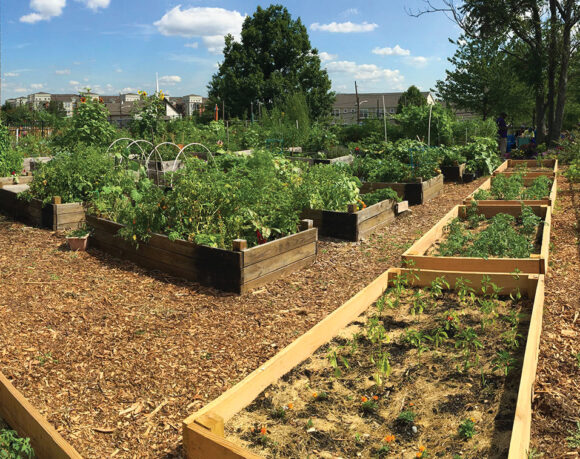 By Stephanie Murphy, Ph.D., Director of the Rutgers Soil Testing Laboratory
By Stephanie Murphy, Ph.D., Director of the Rutgers Soil Testing Laboratory
Interest in gardening grew prolifically during 2020 as the pandemic forced people to spend more time at home. Working in a garden provides a productive outdoor activity that is usually socially distanced from others. Inexperienced gardeners were wise if they reached out to Rutgers Cooperative Extension (RCE) for information and guidance; while RCE offices were closed to the public, staff was busier than ever providing sound advice and education to New Jersey residents.
One of the first steps that gardeners are advised to do is to have a soil test, and Rutgers Soil Testing Laboratory is operating to serve this need. At the lab, years of observations of soil samples, in combination with test results and reported issues in the sampled garden beds—especially in raised beds—demonstrated the need for further information. As a result, a new fact sheet about establishment of garden soils, providing recommendations beyond those for routine nutrient and pH amendments was developed.
Raised beds are a common option for ornamental and vegetable crop gardens. In addition to simply establishing distinct borders to the garden, raised beds may provide benefits in cases of contaminated soil or poor drainage, and can improve physical accessibility for the gardener. On the other hand, one of the major challenges is the ‘quality’ of the soil used in raised beds. The proper selection of soil directly affects the plant health and long-term productivity of the raised bed. Note that a commitment to establish and maintain the garden according to organic management practices does not necessitate strictly using organic matter-based soils. Organic management is based on a philosophy of low-input, sustainable production mimicking natural ecosystems. Most of our natural landscape is dominated by mineral-based soils with 90-95% (wt.) sand, silt, and clay.
Except in cases of contamination at the site, the existing mineral soil should be utilized in filling the raised bed to the extent possible. This may involve decompaction of underlying soil layers and tilling of the surface topsoil layer but usually requires incorporation of soil amendments to create the final growing media. Since enough soil will be needed to fill the raised bed above the initial grade, a “soil” product is often purchased to provide the extra volume. The specific product selected to blend with existing soil should be chosen with care.
Many commercial “garden soil” or “topsoil” products are primarily or entirely organic materials with little or no mineral matter. For example, label ingredients may include: “arbor fines” or “forest products,” wood bark, sphagnum peat moss and/or reed sedge peat, coconut husk fiber (coir), and/or composts of various kinds and quality. These products are very dissimilar to natural landscape soils. While organic matter is a very important component of good quality soil, even the “richest” natural upland soils rarely have more than 10% organic matter by weight, while natural organic soils (defined as having more than 20% organic matter) develop only within poorly drained sites in our temperate climate.
Straight organic matter is often misconceived as the richest, optimal growing media, but organic materials vary considerably, and there are long-term nutrient and physical aspects of an organic growing media that gardeners should be aware of: a) Some organic materials, such as wood fibers or sphagnum peat moss, have structure resistant to breakdown but low nutrient content. Some composts may contain an initial flush of nutrients but reduced nutrient release after easily decomposed components are lost; b) when moist and aerated, organic matter continues to decompose over time, decreasing in volume and porosity when mineral particles are lacking; c) highly decomposed organic matter may retain excessive amounts of water and restrict aeration of the plant roots; d) excess water content and poor aeration creates risks of oxygen stress in plant roots and disease susceptibility; e) certain nutrients are likely to be deficient in organic growing media sources. Potassium, a macronutrient, is not a component of organic molecules and so is rapidly depleted from organic residues; and f) organic matter, when dry, becomes hydrophobic and resists re-wetting. Its low density makes washing away with runoff a possibility when not contained by a bed border barrier.
While organic matter by itself is not recommended for raised beds, it is often the main component of potting soil and other container situations due to the need for low density/low weight. These potting mixes require high levels of management, including frequent small doses of nutrients and careful attention to watering, as well as periodic replacement. To create a more natural, low-input garden bed, utilize the native soil amended with organic matter or an imported mineral soil with appropriate properties. See RCE fact sheets FS1328 Soil for Raised Beds (njaes.rutgers.edu/fs1328) and FS901 Topsoil Suitable for Landscape Use (go.rutgers.edu/8ing3xr6) for more information.
This article originally appeared in March 2021 Gardener News.

